Da Vinci Robotic Bariatric Surgery in Tijuana, Mexico
If you’re struggling to lose weight and keep it off, it may be time to consider life-changing bariatric surgery. Robotic bariatric surgery is one of the most current techniques used for weight loss.
Why Choose ALO Bariatrics for Robotic Weight Loss Surgery
Experience a truly transformative robotic weight loss surgery with ALO Bariatrics. Dr. Alejandro Lopez, the lead surgeon at ALO Bariatrics, is one of only two surgeons who has mastered robotic surgeries in Mexico. Dr. Lopez received specialized bariatric surgery fellowship training at prestigious institutions like Cook County Hospital in Chicago and National Western Medical Center in Guadalajara. He’s also certified by the Mexican College of Surgery for Obesity and Metabolic Diseases.
With over 10,000 successful procedures, his reputation as one of the best, if not the best, bariatric surgeons in Mexico is evident through his patients’ results. Dr. Lopez expertly creates personalized pre- and post-operative treatment plans for patients, prioritizing safety and comfort.
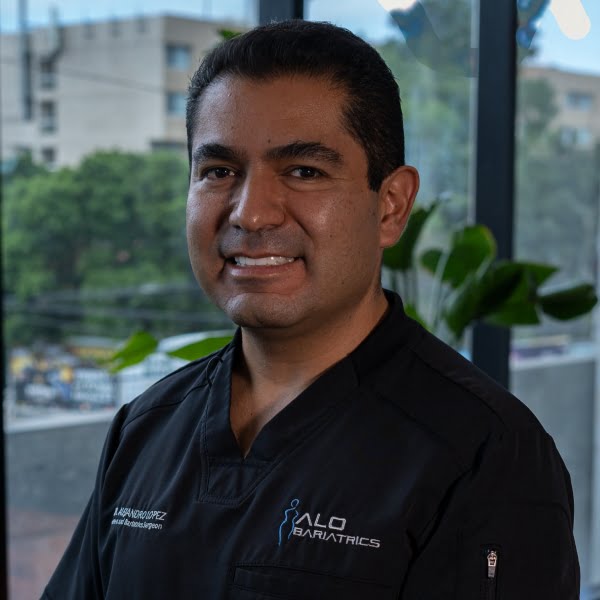
What is Robotic Bariatric Surgery?
The robotics involved in surgery are advanced tools to help your surgeon perform exact maneuvers. Robotic bariatric surgery uses a minimally invasive laparoscopic technique to insert a camera and surgical tools into the abdominal cavity. Only three to four small incisions are needed to insert a high-definition 3D camera and surgical instruments to complete the operation. Robotic surgery allows for greater vision of structures in the abdominal cavity and precise cuts and sutures.
Minimal Complications, Less Scarring, Faster Recovery Time: Precise Results
Minimally invasive procedures mean fewer complications in the operating room and during recovery. Compared to open surgery, the incisions with robotic-assisted laparoscopic surgery are much smaller, only about the width of a pen. This lowers your chances of developing visible scars after bariatric surgery.
More precise incisions and suturing decrease the risk of infection and excess bleeding. The body will have an easier time healing, which can shorten the length of your hospital stay and result in a safe return to your normal activities.
If you’re concerned about potential complications, ask your surgeon about robotic surgery and whether it is a possibility for you.
How Does the Bariatric Procedure Work with Robotic Surgery?
- Patient Cart: This cart controls the robotic arms beside the operating table. It consists of the high-definition camera and advanced laparoscopic tools necessary to complete the procedure, all of which are attached to individual robotic arms. These instruments are inserted through the tiny incisions in your abdomen to perform the surgery.
- Vision Cart: The vision cart helps other team members in the operating room closely visualize what the surgeon is doing so that they can help assist. The cart contains computers that can produce high-definition 3D views of the surgical site that the team wouldn’t have in a traditional surgery. These advanced views allow the surgeon to be more flexible with the tools, making the surgery safer and more efficient.
- Surgeon Console: The surgeon console is where the surgeon sits while operating. The console is located in a different part of the operation room so the surgeon can focus on the procedure without distraction. The surgeon will look through a viewfinder, where they can view the surgical area in 3D and control the robotic-assisted tools using remote controls. The console eliminates hand tremors and allows for instrument positioning that isn’t possible with the human hand.
Surgeons who wish to use the Da Vinci robotic-assisted surgery system receive extensive training in using the device. Only experienced, skilled bariatric surgeons can add this unique tool and make it available for patients.
Robotic Bariatric Surgery vs. Laparoscopic
Laparoscopic surgery is already a safe, minimally invasive technique. Adding robotic assistance makes it even more so. The risks of complications with laparoscopic surgery are very low, at roughly a 3-5% chance. Robotic-assisted surgery carries an even lower risk of developing complications, making it an easy choice to justify.
In traditional laparoscopic surgery, the surgeon holds their surgical tools and views the tools in the abdominal cavity through a monitor.
With robotic-assisted surgery, the surgeon doesn’t have their hands directly on the surgical tools but controls the precise movements of the robotic arms and tools from their console. The images the surgeon can see with robotic-assisted surgery are far superior to the regular camera used in laparoscopic surgery.
Both laparoscopic and robotic-assisted bariatric surgery are safe and effective. The largest contributor to your procedure’s safety is the surgical staff’s knowledge and experience. The team at ALO Bariatrics uses leading-edge technology to minimize the risk of complications during and after surgery.
Robotic Surgery: What the Science Says
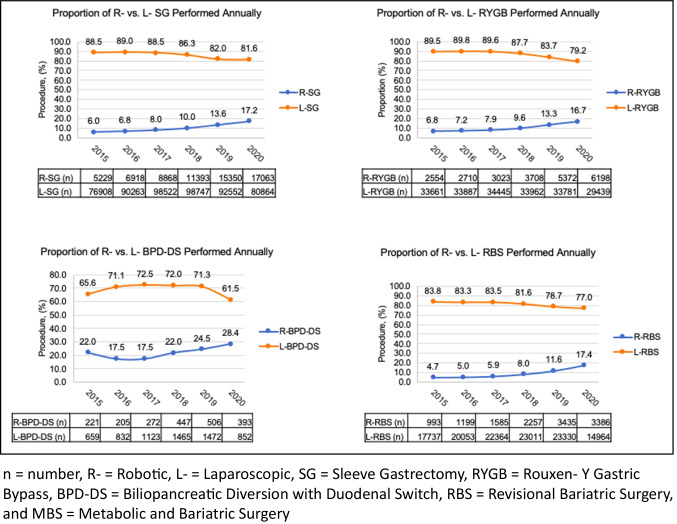
Robotic bariatric surgery is becoming increasingly popular, as the share of robotic surgeries as a percentage of all bariatric surgeries increases (Source: Current Trends in the Utilization of a Robotic Approach in the Field of Bariatric Surgery).
The Da Vinci robotic system has been approved by the FDA since 2000. Since this pioneering technique began, the popularity of robotic bariatric surgery has steadily increased. Due to its many benefits, more surgeons and patients are opting for robotic surgery vs traditional laparoscopic surgery.
Patients who undergo robotic-assisted bariatric surgery have a lower risk of excess bleeding, leaking of stomach contents, and anatomical problems from surgery. Infection is always a concern after any surgery, and the use of robotic-assisted surgery has been shown to decrease this risk in bariatric procedures.
ALO Bariatrics is one of the only surgical groups in Mexico that can use the Da Vinci robotic system in bariatric surgery. Call today to learn more about how ALO Bariatrics may be able to help you during your weight loss journey.
Which Surgeries Does Da Vinci Pair Well With?
Here are some of the common robotic-assisted surgeries patients choose to have:
Gastric sleeve (sleeve gastrectomy): This surgery permanently removes up to 80% of your stomach and does not reroute any part of your intestines. This less complex procedure is one of the more popular procedures throughout the world.
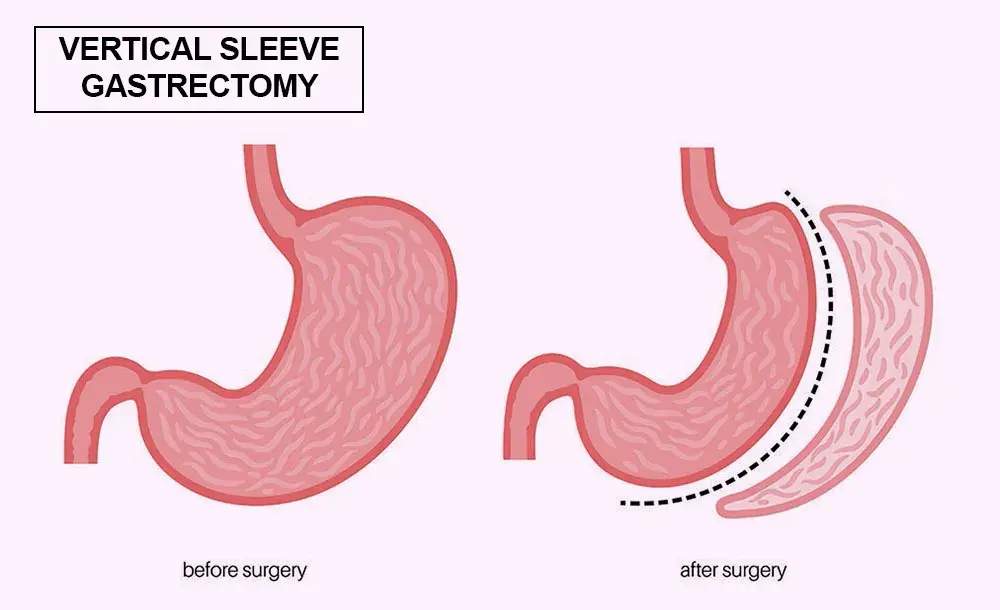
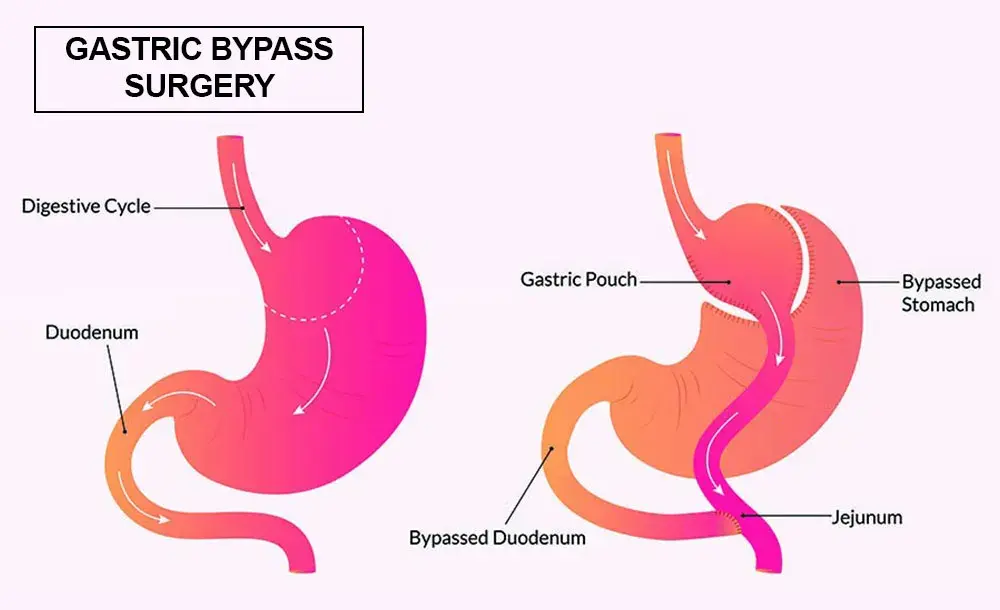
Gastric Bypass (Roux-en-Y procedure): This procedure forms a small pouch from your stomach. This pouch is sealed off and serves as your new stomach, holding about 15% of what it used to. The pouch is then reconnected to a part of the small intestine and can help you lose a substantial amount of weight.
Duodenal Switch: A surgery that results in roughly 75% of your small intestine being bypassed and results in two points of reconnection in the intestines. The duodenal switch can lead to significant weight loss for those who are severely overweight.
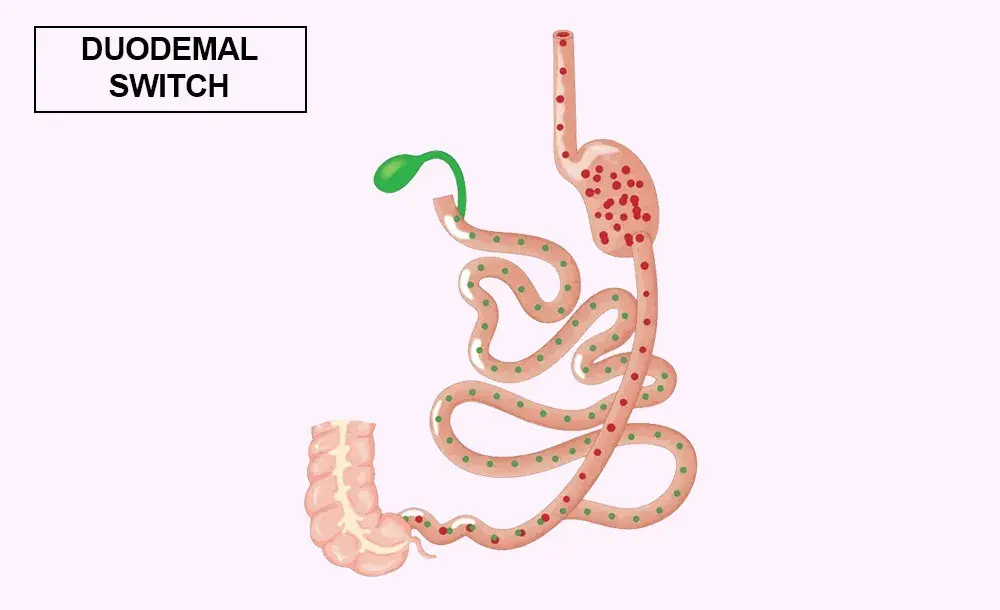
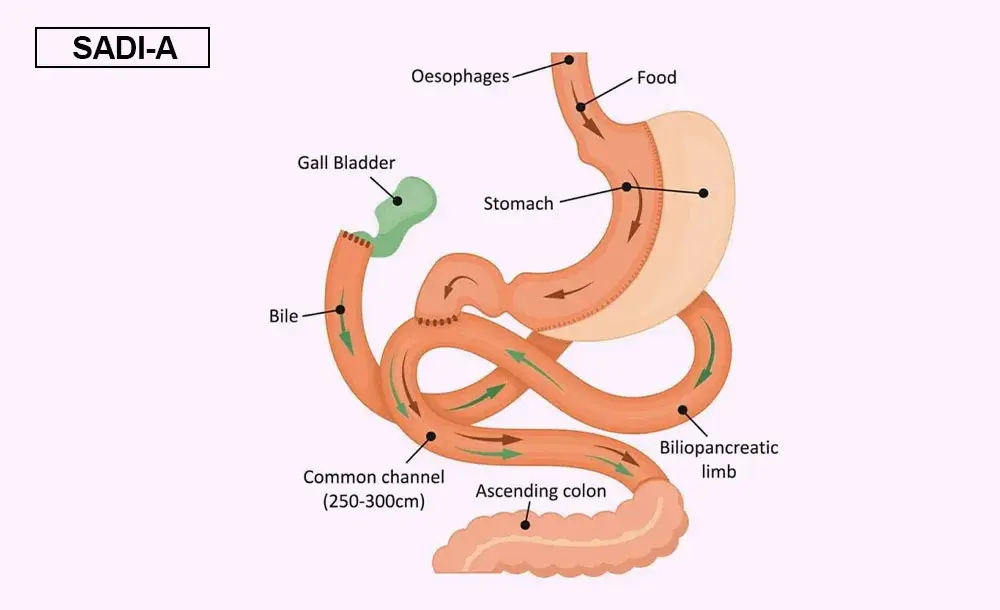
SADI-A: A version of the duodenal switch surgery that bypasses a significant portion of the small intestine, but only requires one surgical reconnection (anastomosis). One anastomosis instead of two can lead to fewer side effects and complications.
The right robotic surgery for you will be a decision between you and your surgeon. You’ll be able to discuss the risks vs benefits of each surgery and explore the option that best fits your goals. Call today and speak with a surgeon from ALO Bariatrics about which robotic surgery may be right for you.
Schedule Your Free Consultation with the Experts at ALO Bariatrics
Patients from across the world have made ALO Bariatrics their partner in helping them reach their weight loss goals. With transparent all-inclusive pricing, we’re able to provide the same level of safe, quality care at a fraction of the cost.
Schedule a consultation with a skilled surgeon from ALO Bariatrics when you’re ready to discover how robotic surgery can help you achieve the weight loss you’ve been dreaming of.
Robotic Bariatric Surgery FAQs
The use of the Da Vinci robotic system will add cost to any of the bariatric surgeries you choose. In general, a robotic-assisted bariatric surgery in the United States and Canada will cost upwards of $40,000. Comparatively, the same surgery using the same equipment done with ALO Bariatrics in Mexico will cost around $9,500, a significant savings compared to the USA and Canada.
The exact cost of your surgery will be unique to your case, so it’s essential to speak with a member of the ALO Bariatric surgical team today to get a better idea of how much your specific surgery may cost.
Since robotic surgery is the most minimally invasive surgical technique available, it will have the shortest recovery time compared to laparoscopic or open surgery. With robotic surgery, you’ll heal faster, have a lower risk of complications, and be able to resume your normal daily activities sooner. With robotic surgery, you’ll only need two to three weeks to almost completely recover.
Your solution to your weight problems is as close as a phone call away.

